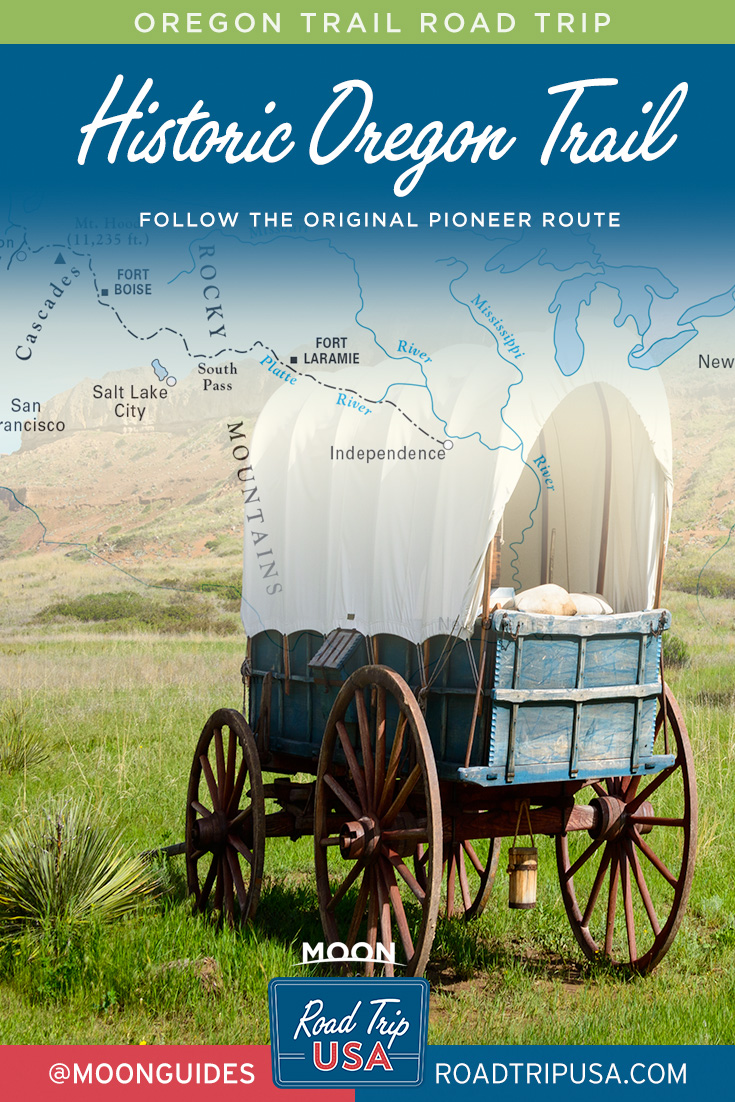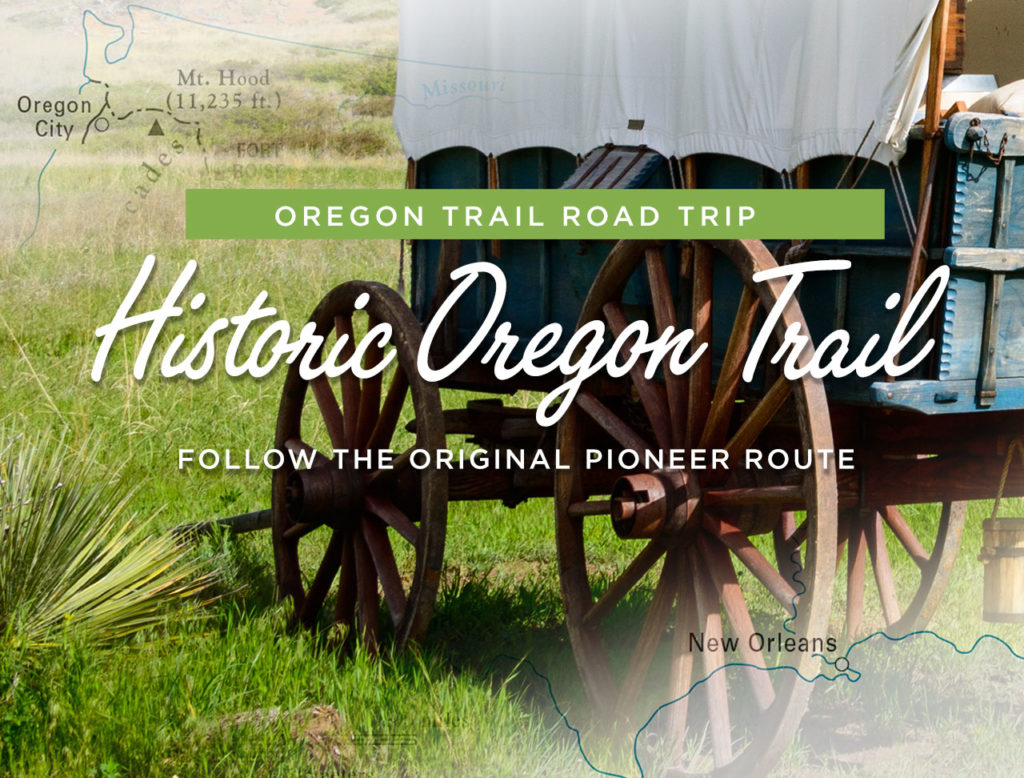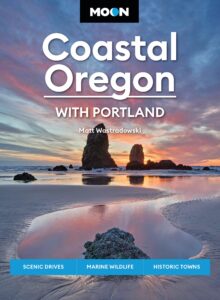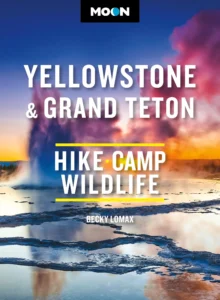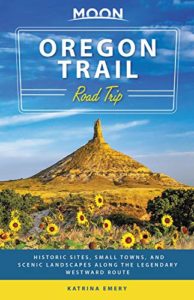The Historic Oregon Trail
In 1993, the 150th anniversary of the opening of the Oregon Trail renewed interest in this best-known of emigrant trails across the Wild West. History buffs got together for summer-long reenactments of the arduous crossing, building authentic wagons and eating, dressing, and sleeping as the pioneers did—with the inestimable comfort of knowing that they, unlike their predecessors, could easily return home at any point.
From 1843 until the 1860s, some 400,000 men, women, and children followed this 2,000-mile trail, averaging four months to make the cross-country journey. Long followed by fur trappers and traders, and first charted by a series of U.S. Army expeditions led by Kit Carson and John C. Fremont in the early 1840s, the historic Oregon Trail followed the path of least resistance across the western half of the continent. Beginning at various points along the Missouri River, the trail followed the valley of the Platte River across the Great Plains, crossed the Rockies at Wyoming’s gentle South Pass, then set off across the desert of southern Idaho. The most difficult parts were saved for the end, when emigrants had a choice of floating downstream on the turbulent Columbia River or struggling over the rugged Cascades to reach the Willamette Valley. Nearly half of the travelers who set off along the Oregon Trail from Missouri actually had other destinations in mind: More than 100,000 turned off south toward the California gold mines, and some 30,000 Mormons followed the route west to their new colony at Salt Lake City.
The Oregon Trail had many variants and shortcuts and was never a sharply defined track, but clear traces survive in a number of places along the route. Many evocative sites also survive, often as reconstructions of pioneer forts, trading posts, and river crossings. There are also many fine museums along the way.
Many historic sites are covered in more detail under our Road Trip routes, including the Oregon Trail Road Trip, but here are our picks for some of the most interesting places to visit today:
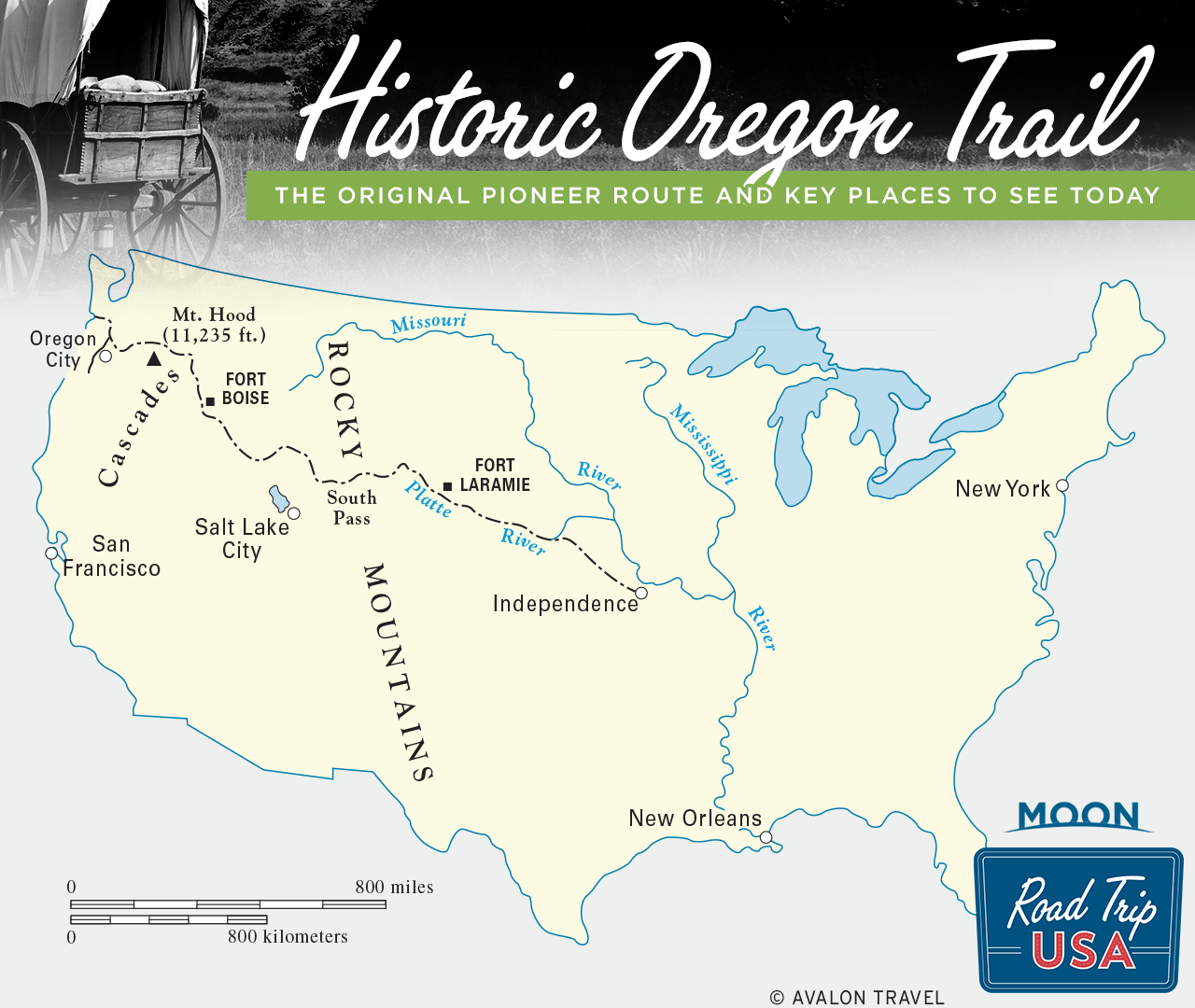
Historic Oregon Trail Sights
The Barlow Road: To avoid the treacherous falls of the Columbia Gorge, many emigrants opted to follow this difficult toll road, which cuts inland around Mt. Hood.
The National Historic Oregon Trail Interpretive Center: In eastern Oregon, off I-84 near Baker City, Oregon’s biggest and most developed Oregon Trail historic site (541/523-1843, daily 9am-4pm fall-spring, daily 9am-6pm summer, $8) has an original Meeker Marker and a 15-mile-long set of well-preserved wagon ruts.
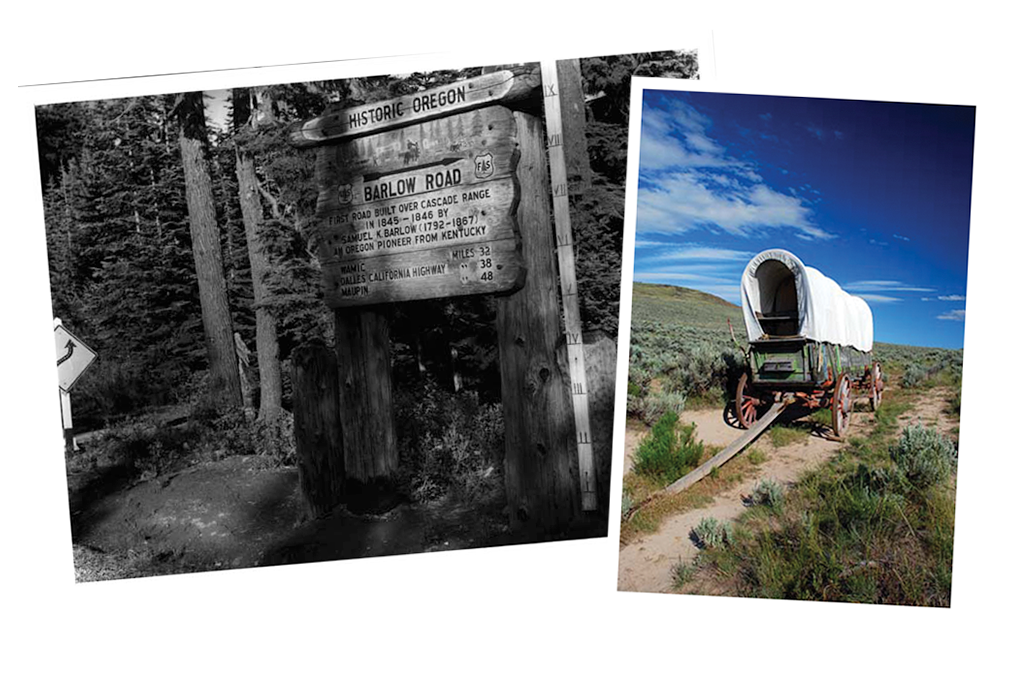
Fort Boise: This fortress, a reconstruction of a fur-trapping post built nearby in 1834, stands along the banks of the Snake River. Visit the Fort Boise Replica and Museum in Parma, Idaho.
Three Island Crossing State Park: This is one of the best places to get a feel for life as an Oregon Trail pioneer. Camp where they camped and swim where they swam, at one of the most important crossings of the Snake River. Visit Three Island Crossing State Park from the town of Glenns Ferry.
Fort Caspar: A credible reconstruction of a frontier fort houses a good museum and the remains of an early ferry and bridge over the Platte River, while a new building in town houses the National Historic Trails Interpretive Center.
Fort Laramie: Located 77 miles southeast of Douglas, Wyoming, this restored fort is among the best stops on the contemporary trail. The most impressive set of preserved wagon ruts survive in an evocative state park outside Guernsey, upstream from the fort.
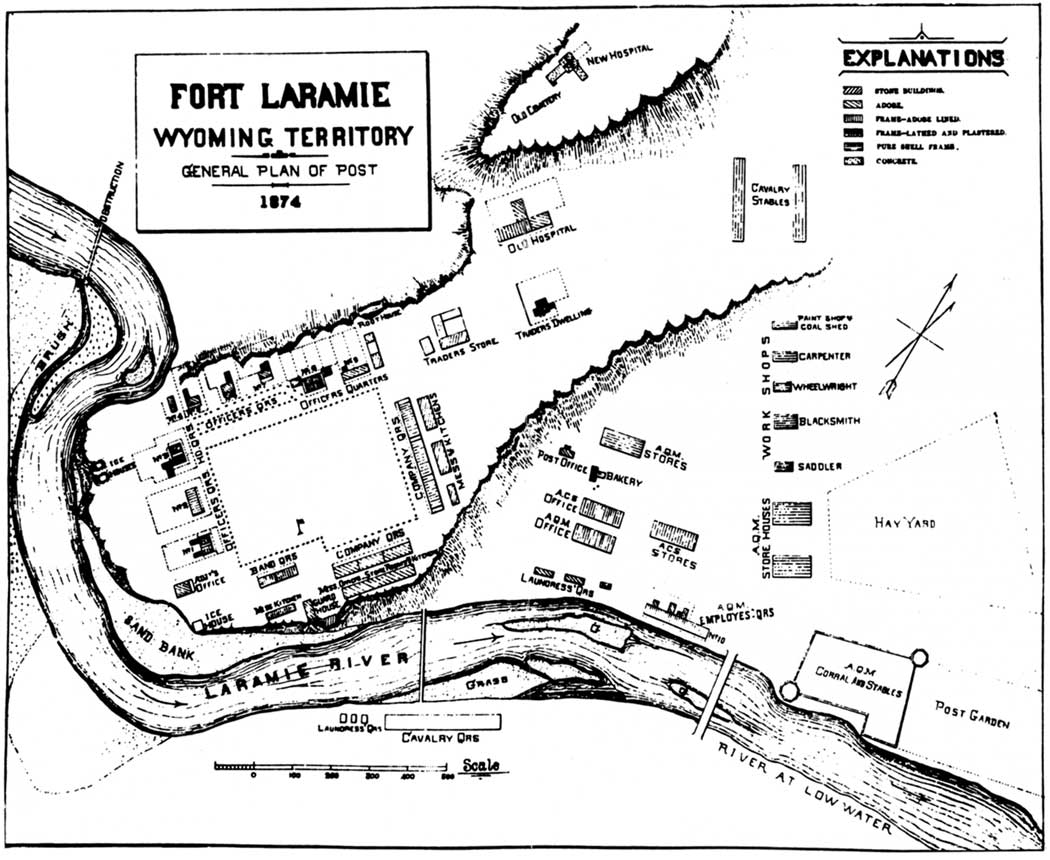
Santa Fe Trail Junction: For the first few miles, the Santa Fe and Oregon Trails coincided, and a sign here, at what is today the town of La Junta, pointed the way: right to Oregon, left to Santa Fe. Visit La Junta along the Loneliest Road route.
Independence, Missouri: Where most travelers on the Oregon Trail began, this is also the site of one of the best museums on the subject of the westward migrations. Check out Independence, Missouri along the Loneliest Road route.
Related Travel Guides
Pin it for Later
